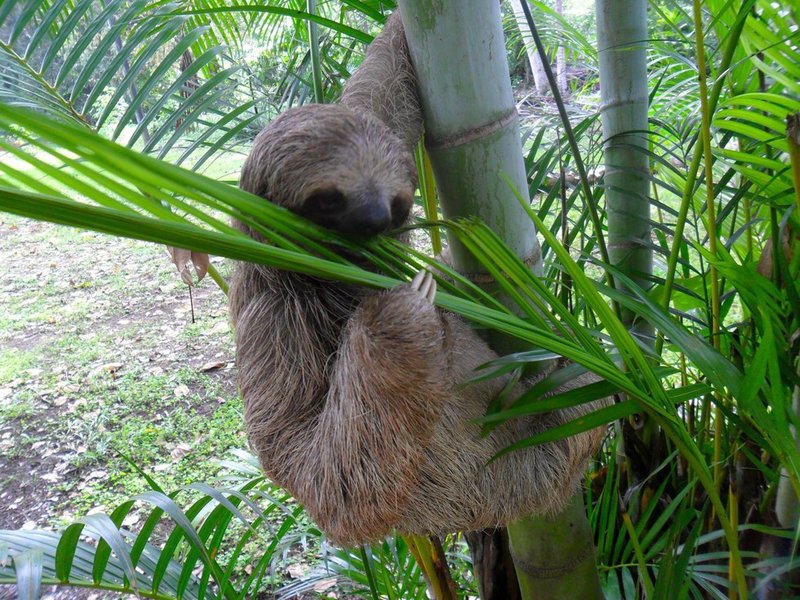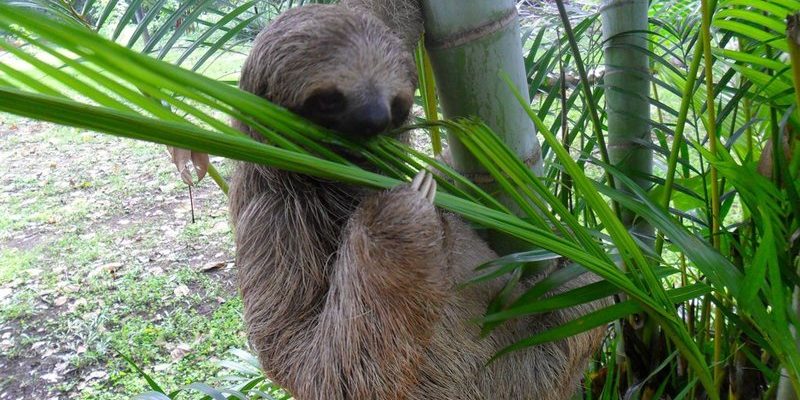
So, why does the diet of the three-toed sloth matter? Well, understanding what these quirky animals eat and how they get their food can give us a deeper appreciation for their role in the ecosystem. Think of it like stepping into a hidden world where the pace of life is different, and every food choice is a deliberate one. In this article, let’s dive into the sloth’s diet and explore their unique strategies for finding food in the lush canopies of Central and South America.
What Do Three-Toed Sloths Eat?
The three-toed sloth primarily munches on leaves, fruits, and some flowers. Their diet is pretty specialized, which means they’re quite picky about what they eat. Most of the sloth’s meals come from a select few types of trees. Some of their favorites include mango, guava, and cecropia trees. These trees not only provide food but also a safe haven where they can hang out and sleep for up to 20 hours a day!
Now, one might think that a diet of mostly leaves sounds pretty boring. But there’s a reason behind it! Leaves are rich in fiber but low in calories, so sloths have adapted to a slow metabolism. This allows them to get the energy they need while conserving it, and their stomachs are specially designed to help digest those tough leaves. Just imagine trying to munch on a pile of salad all day; it takes time and patience!
How Do Sloths Forage for Food?
Foraging for food isn’t as simple as plucking a fruit off a branch. Three-toed sloths have developed a unique technique for finding their meals. Unlike faster animals that dart here and there, sloths move deliberately and slowly. This slow pace helps them avoid detection by predators, while also allowing them to really inspect every leaf to ensure it’s edible and safe.
You might wonder, how do they know which leaves to choose? Sloths can discern between different trees and their leaves through trial and error. Plus, they often stick to familiar trees. The habit of revisiting the same trees makes it easier for them to find food without exerting too much energy. You could say they have their own version of a favorite restaurant!
Role of Gut Bacteria in Digestion
Here’s where it gets really interesting: sloths rely heavily on gut bacteria to help break down the tough fibers in their leafy diet. These bacteria ferment the leaves, making it easier for sloths to extract the necessary nutrients. It’s like having a personal chef in their stomachs that does the hard work of cooking!
This symbiotic relationship between sloths and their gut bacteria is crucial. Some studies suggest that the unique blend of bacteria changes based on what types of leaves a sloth eats. This means that if a sloth tries a new type of leaf, its digestive bacteria might also adapt to better handle that food. It’s a perfect example of evolution at work, don’t you think?
Sloths and Their Unique Foraging Schedule
Another fascinating aspect of the three-toed sloth’s life is their foraging schedule. They tend to be nocturnal or crepuscular, meaning they’re most active during the early morning or evening. This is when it’s cooler, which helps them conserve energy while they’re searching for food. During the day, they often snooze in the trees, enjoying the dappled sunlight filtering through the leaves.
This schedule also helps them avoid some of the hotter parts of the day, where moving around would require more energy and risk dehydration. Plus, their shaggy fur is home to algae that not only gives them a greenish tint but also helps camouflage them in the trees, making foraging a bit easier.
Challenges in Their Diet
While sloths have adapted well to their diets, they still face challenges. Climate change and habitat destruction are putting pressure on their food supply. As trees are cut down or dying due to environmental shifts, sloths may find it harder to find their essential leaves. This can affect their health and reproduction rates.
Moreover, the limited variety in their diet can also be problematic. If their favorite trees are removed, they might struggle to adapt to new food sources. It’s a reminder that everything in nature is interconnected. Protecting sloths means protecting their habitat and food sources, ensuring these remarkable creatures can continue to thrive.
The three-toed sloth is a truly unique creature, and its diet reflects an intricate balance with its environment. From their selective eating habits to their slow and thoughtful foraging methods, sloths show us that sometimes, taking it slow isn’t such a bad thing. They remind us that life can be rich and full, even at a leisurely pace.
So, next time you see a sloth hanging out in a tree, remember that there’s a lot more going on than meets the eye. Their diet and hunting strategies might not be the traditional ways we think of hunting, but they are perfectly suited to their lifestyle. By protecting their habitats, we can help ensure that sloths continue to thrive in the wild, savoring their beloved leaves for generations to come.

